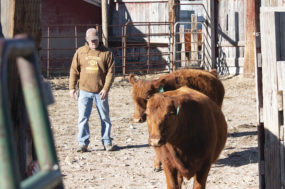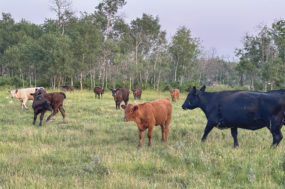Since 2004, the World Organization for Animal Health (OIE) has been working to develop international farm animal care guidelines. Formed in 1924, this intergovernmental organization is responsible for improving animal health worldwide, and is recognized by the World Trade Organization (WTO) as the official reference organization on related issues.
However, just since August, two more international bodies have announced separate animal welfare initiatives – creating great confusion and potentially duplicative (and unnecessary) efforts that have even those of us engaged in addressing animal welfare issues full-time trying to keep up.
The International Standardization Organization (ISO) announced in August it was considering creating international standards for farm animal welfare, but it needed approval by its members. ISO is not a governmental body, but is “the world’s largest developer of voluntary International Standards,” and is a network of national standards bodies. Its members pay to participate, and the U.S. is represented by the American National Standards Institute (ANSI).
With robust input from agricultural stakeholders to ANSI, the U.S. officially voted “no” to ISO’s proposed initiative, however, it still passed. Therefore, the U.S. will participate in the process and exert efforts to take a leadership role to ensure the best possible outcome for U.S. producers.
In just late November, we learned the United Nations’ Food and Agriculture Organization (FAO) is throwing its hat into the ring by adding animal welfare to its Global Agenda of Action in Support of Sustainable Livestock Sector Development (The Agenda). The FAO is an intergovernmental organization that focuses on food security, raising levels of nutrition and improving agricultural productivity worldwide.
According to the FAO, “The Agenda is a multi-stakeholder initiative which focuses on the improvement of resource-efficiency use in the livestock sector and in turn to support livelihoods, long-term food security and economic growth.” However, it has also adopted “do no harm” principles for the implementation of its activities, including animal welfare.
While the FAO initiative has been brewing for a while, it appears animal welfare was just recently added, and the U.S. only received the invitation to comment in November.
The FAO has indicated its initiative is based on “the notion that that demand growth for livestock products will likely continue for decades as incomes and human population continue to grow.” That part sounds like good news, right?
But are three different groups needed to establish international farm animal welfare standards? Most U.S. agricultural stakeholders think not.
If all groups were to establish different guidelines, which one should the U.S. adhere to? Why aren’t these groups coordinating and working together to formulate one set of standards? Who is involved in each of these initiatives? Who would confirm adherence to such guidelines? What impact would these guidelines or standards have on international trade?
At this point, we have more questions than answers.
Since the OIE – which is the one body of these three officially recognized by the WTO for animal health issues – is a veterinarian organization and has been engaged in the animal welfare guideline process for over eight years, most stakeholders feel it should remain the recognized organization.
While the ISO has stated its goal is to coordinate with OIE to adopt its guidelines as its standards, that’s not guaranteed. The potential still exists for there being three different sets of guidelines – all created by different groups (some of which include activist groups among the participants). And that’s assuming no other group jumps in.
The Animal Agriculture Alliance and its coalition members, which include National Cattlemen’s Beef Association, National Milk Producers Federation and National Pork Producers Council among many others, are working diligently to stay on top of all of these initiatives to ensure the U.S.’ voice is represented and to work toward coordination, consolidation (and possibly elimination of some) of these efforts.
The U.S. agricultural industry has been a leader in developing science-based and practical guidelines for farm animal care, and without the need for federal - or international - regulation.
We must be at these international tables – and assume leadership roles where possible - to ensure these efforts do not create negative trade environments for American farmers and ranchers. And at the same time, we must work to keep the floodgates from bursting from the deluge of competing international standards. ![]()

Kay Johnson Smith
President & CEO
Animal Agriculture Alliance








